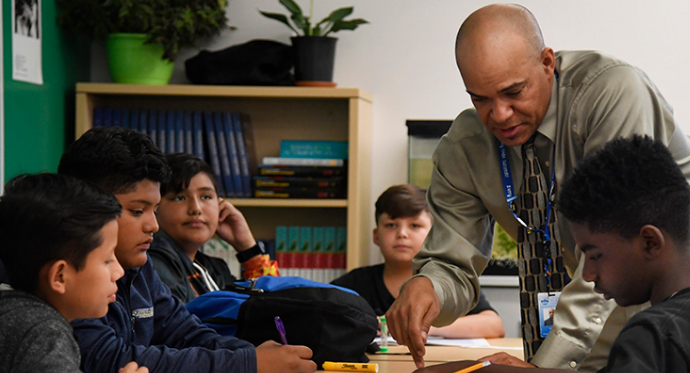Martinez: As a Teacher, I Know Students Need Challenging Coursework to Thrive. Here’s What Happened When I Tried It in My Classroom.
ByJoshua Martinez (op-ed)
Read the full article at The 74 >
As a teacher, I am always open to ideas that will make me a more effective educator. That said, I often feel there is a disconnect between the reality in my classroom and community and the world of education policy reports written by think tanks in Washington, D.C. But a recent report by TNTP called The Opportunity Myth has a unique perspective on America’s education challenges: the firsthand experiences of 4,000 students around the country.
The Opportunity Myth takes us through the school day of students in five diverse districts to find a startling, consistent truth: Teachers and principals are telling kids that they can achieve their academic dreams — but rarely provide the classroom environment to make these aspirations possible.
The reality is, many students aren’t graduating from high school prepared to succeed in college, even though over 70 percent are meeting the demands of their assignments. That’s because students are not being challenged enough by their classwork. The report found that students spend over 500 hours each year learning material that’s not at grade level.
This gap between what’s taught and what students need to learn to be equipped for future success is most profound for students of color, students from low-income families, and students learning English as a second language.
But I have seen in my own classroom how children benefit from a more challenging and personalized learning environment.
In the beginning of the 2017 school year, I started teaching a more challenging English curriculum. Many of my students were initially frustrated by the more difficult coursework. But through repetition and practice in a safe, supportive environment, their confidence and understanding grew immensely. Their class participation increased, and they started using more complex vocabulary and making connections between various poems we had read. The shift was profound. My students rose to meet the academic challenge presented, and it transformed the way they felt about themselves and their schoolwork.
But this progress did not come from me simply raising the bar and expecting my students to keep up; it required a thoughtful approach that took into account the emotional needs of everyone in my class.
As educators increase academic rigor, they need to make sure students feel emotionally safe and supported in school. Students should be able to take risks and learn from their mistakes. As teachers, we need to express to students that we’re in this together and that we believe deeply in them. We must find opportunities to recognize and celebrate student growth. For instance, I’ve begun making videos of our in-class discussions and playing them back to the class so we all can observe our improvement and critique our work together.
Teachers must also recognize that many children experience trauma outside of school that can impact their classroom experience, behavior, and performance. At KIPP Raíces, many of our students and their parents work two or more jobs just to afford the cost of living in our community, live in fear of rapidly changing immigration policies, and are exposed to traumatic events like neighborhood violence. That’s why we work to incorporate best practices of trauma-informed instruction: providing a classroom environment designed to help students feel safe by teaching mindfulness techniques, and having clear routines that are developmentally appropriate.
As teachers, we must also make sure to use materials and strategies that are multicultural and culturally responsive. When students read books that reflect their identities, for instance, they are better able to make connections to their own lives.
The Opportunity Myth asks more of teachers who are already working so hard. School leadership needs to support and stand behind their teachers. Principals, as well as district leaders, should be providing the resources, training, and planning time that teachers need to prepare to present more rigorous material to their students more effectively.
As an educator, I am grateful that TNTP is drawing on the expertise of students and teachers in making recommendations for changing education policy and practice. As the report concludes, we need higher expectations for what our students can achieve. I look forward to the day when my students are the ones standing in front of classrooms as teachers and conducting research that shapes education policy. I pledge to help them get there — and to do so, I will provide the challenging, grade-level, supportive, and trauma-informed curriculum they deserve.
Joshua Martinez teaches fourth grade at KIPP Raíces Academy in East Los Angeles.
